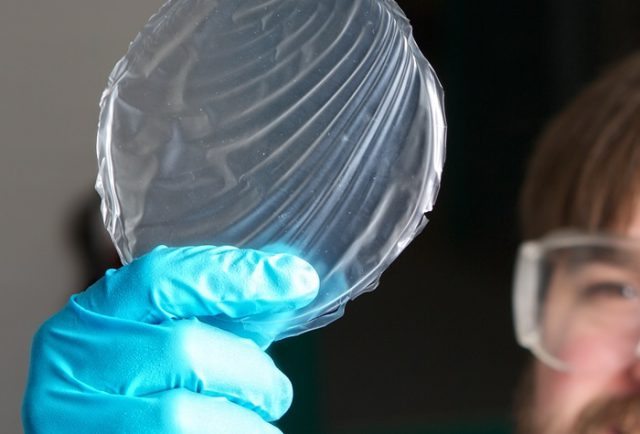A new more sustainable material developed by reinforcing commercial bioplastic using additives from plants such as nanocellulose and oregano extracts can solve the most common challenges of the bioplastics such as brittleness, moderate barrier properties and low heat resistance. Furthermore, the new material actively protects the food from degradation.
There are plenty of arguments for investing in research into bioplastics.
Especially, polylactic acid (PLA) continues to show much promise for sustainable food packaging.
PLA is both bio-based and biodegradable, and as such is a good alternative to petrochemical based plastics.
Bioplastics made from PLA are already available in the market today.
Yet PLA in its pure form has important limitations, such as low thermal resistance, which makes thermoforming (fabrication of the product from the molten plastic) a challenge and limits its uses for applications requiring high temperature.
Furthermore, without additives PLA does not provide an adequate barrier against oxygen and water in the surrounding environment which leads to a faster degradation of the food, and pure PLA is highly brittle.
Combining polymer and clay
A 2016 PhD project at DTU Chemical Engineering by Jon Trifol Guzman showed some interesting results that may solve these issues.
“The thermomechanical properties of PLA have already been proved to be enhanced with the addition of nanocellulose, but I wanted to know what happens when you combine nanocellulose and nanoclay in a polymer matrix,” says Guzman, former PhD student at Danish Polymer Centre and owner of the project.
“I extracted high purity nanocellulose from sisal fibers by a novel, simple and easily up-scalable process.”
“Composites with this nanocellulose reinforced the PLA as expected, but what was particularly interesting was the dramatic synergistic effect that became evident from the combination,” he says.
Longer shelf-life
The combination not only made the PLA stronger, it also improved the possible production rate.
“When I investigated the hybrid composites further in terms of size and type of crystalline and amorphous domains of the polymer, I was able to explain the effect of the two fillers,” says Guzman.
“What I found was that the combination not only resulted in better crystals, but it also produced them 10 times faster. You can imagine that in industry this will make quite a difference.”
The project also shed light on the key parameters of the controlled release of active components for use in packaging materials.
In particular, the use of oregano extracts in combination with packaging materials is interesting, since oregano extracts are known to kill the bacteria that degrade the food, which means a controlled release of those compounds would potentially enhance the shelf-life of the food.
95-99% biodegradable plastic
The additives in bioplastics are often criticized for not being degradable.
However, according the new findings, the amount of additives can be reduced significantly.
By adding 1% nanocellulose and 1% nanoclay, the properties of the bioplastic can be improved to a large extend.
Depending on the conditions, the improvement on barrier properties was up to 90% – and at industrial level this could be even higher, since the faster crystallization usually experienced during industrial processing was not taken into account.
Also, the new material was proven to have a significantly improved thermal resistance up to 80ºC.
“Of course nanoclay is not biodegradable, but on the other hand it is basically soil, and in such small amounts the bioplastic will still be at least 95%-99% biodegradable,” says Guzman.
“That means the industry is now very close to having a sustainable and useful food packaging.”
Story by Lotte Grandorf, Technical University of Denmark










